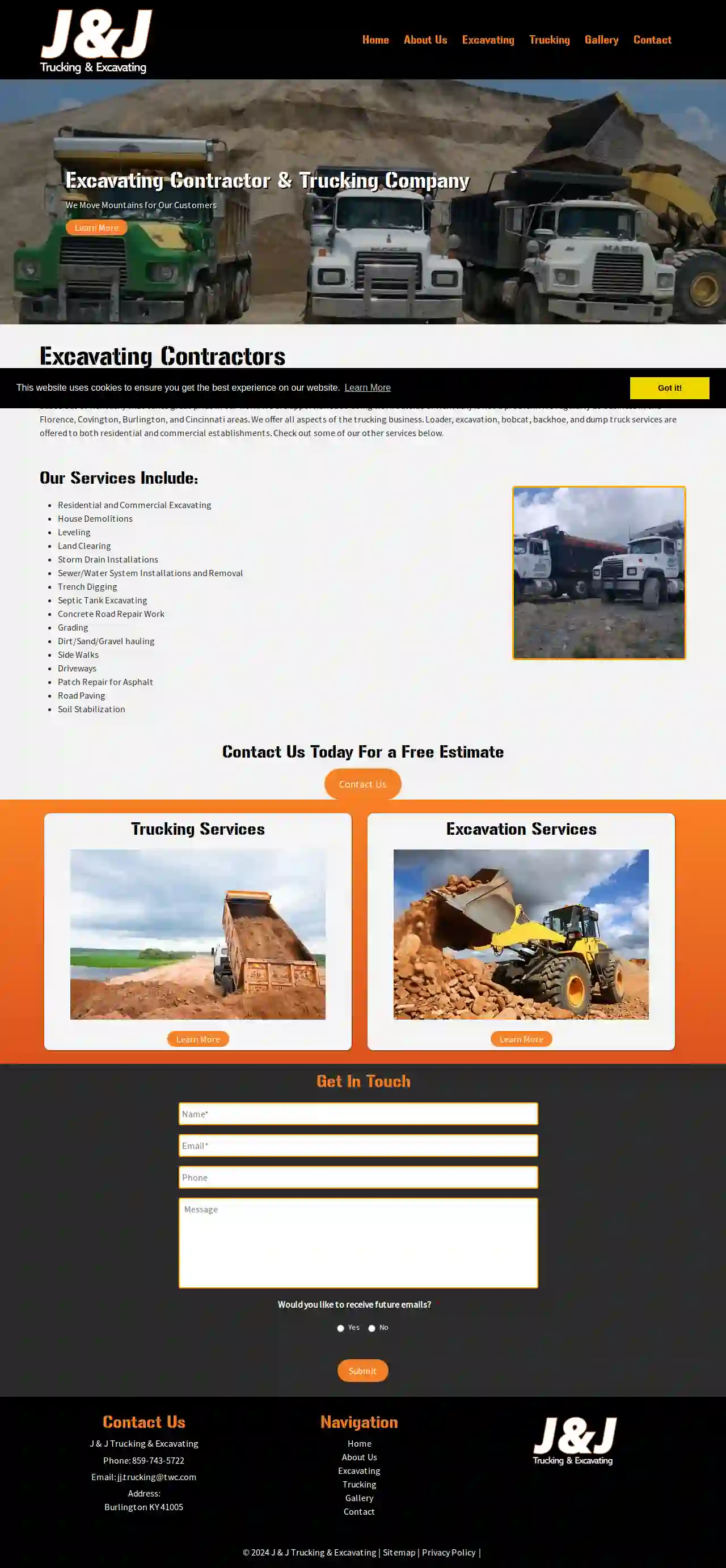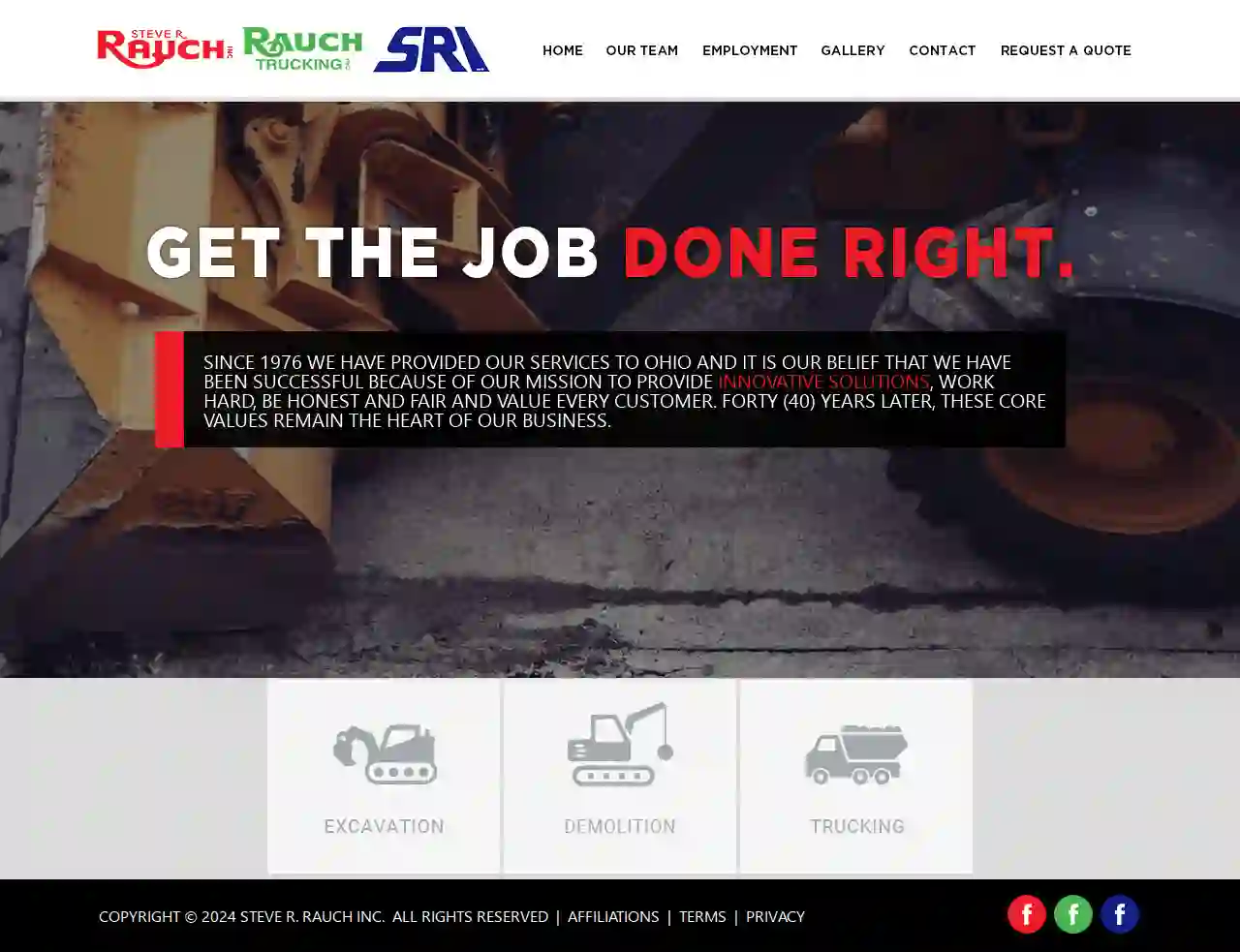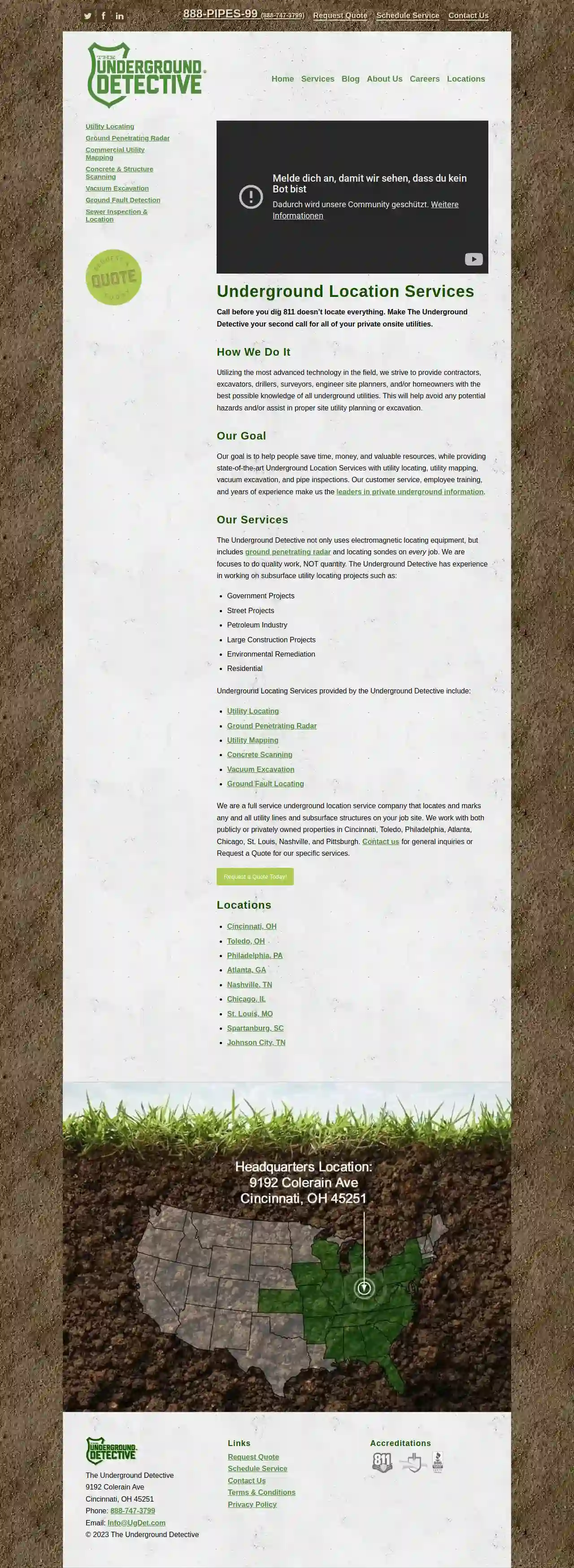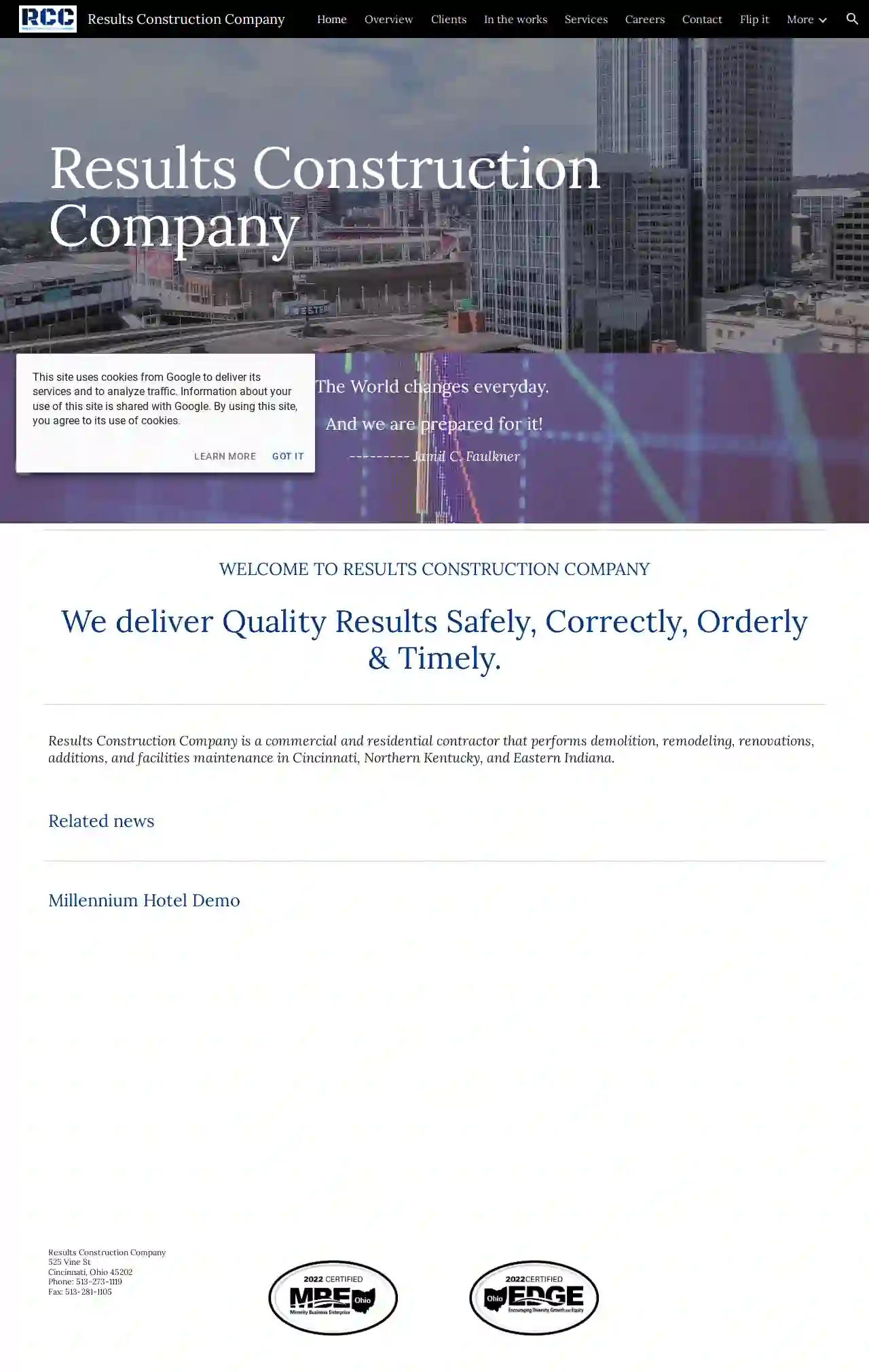Demolition Contractors Whitehouse
Find the best Local Demolition Contractors in Whitehouse
Get up to 3 Demolition Contractors Near Me quotes for your project today! Compare profiles, reviews, accreditations, portfolio, etc... and choose the best offer.

J&J Trucking & Excavation
3.73 reviewsBurlington, 41005, USWe Move Mountains for Our Customers J & J Trucking and Excavating has been offering commercial and residential trucking and excavation services for over 30 years. We are a small family-owned company based out of Kentucky that takes great pride in our work. We are apportioned so doing work outside of Kentucky is not a problem. We regularly do business in the Florence, Covington, Burlington, and Cincinnati areas. We offer all aspects of the trucking business. Loader, excavation, bobcat, backhoe, and dump truck services are offered to both residential and commercial establishments. With over 30 years in the trucking and excavating business you can trust on J & J trucking to get the job done right the first time. We are a small family-owned company based out of Kentucky that takes great pride in our work. We treat our customers the way we want to be treated and strive to make sure your project goes off without a hitch.
- Services
- Why Us?
- Gallery
Get Quote
Ohio Valley Excavating
38 reviewsLebanon, OH, USWho We Are Founded in 2004, Ohio Valley Excavating (OVE) delivers full-service excavation solutions in the electrical and communications industries for private, public, and federal sectors. OVE's capabilities include providing the end-users with a turn-key solution for underground electrical and communication infrastructure. OVE is headquartered in Lebanon, OH and services the Midwest. Our History Founded: 2004 Joined Congruex: 2021
- Services
- Why Us?
- Gallery
Get Quote
Dayton Ditch & Drainage
4.962 reviewsDayton, USDayton Ditch & Drainage: Your Trusted Drainage Experts in the Greater Dayton Area Dayton Ditch & Drainage is a locally owned and operated company dedicated to providing exceptional drainage solutions for both residential and commercial properties in the Greater Dayton Metropolitan Area. Our team of experienced professionals has been serving the Miami County area for years, building a reputation for quality workmanship, affordability, and customer satisfaction. We understand the frustration and inconvenience that water damage can cause. Whether you're dealing with basement flooding, landscaping erosion, or persistent water pooling, we have the expertise and resources to address your drainage needs effectively. Our founder, Brian Lambert, brings over three decades of experience in the commercial drainage installation industry. This wealth of knowledge allows us to provide tailored solutions that meet your specific requirements and budget. At Dayton Ditch & Drainage, we are committed to: • Providing comprehensive drainage assessments to identify the root cause of your issues. • Offering a wide range of drainage solutions, including French drains, sump pumps, catch basins, and more. • Utilizing high-quality materials and proven installation techniques to ensure lasting results. • Delivering prompt and professional service, keeping you informed throughout the entire process. • Offering competitive pricing and flexible financing options to make our services accessible to all. We are proud to be a trusted partner for homeowners and businesses in the Dayton area. Our commitment to excellence has earned us numerous positive testimonials from satisfied clients. We invite you to explore our website and learn more about our services. Contact us today for a free consultation and let us help you reclaim your property from the damaging effects of water.
- Services
- Why Us?
- Testimonials
- Gallery
Get Quote
Mike Pusateri Excavating
4.85 reviews16363 Saint Clair Avenue, East Liverpool, 43920, USA Family Owned Commercial and Residential Excavating Company Mike Pusateri Excavating Inc is a Commercial and Residential Excavating Company that prides itself in the quality of work and high standards of performance it provides for our customers. These qualities and principles have been the foundation of the company since 1960. We continue to take pride in our work and strive for excellence resulting in top quality projects that reflects the reputation we have built over the years and continue to stand by. The Company was founded by Michael Pusateri Sr. in 1960. It all started with a dump truck and high lift. The company continued to grow due to the hard work and success over the years. Eventually, the reins were turned over to the next generation when Mike Pusateri Jr and brother Jim Pusateri took over the responsibilities. During these years the company began to expand, and their equipment fleet and capabilities grew larger. Mike Pusateri Jr. is still the acting President of the company and now with the addition of a third generation to include sons Matt and Jason Pusateri as well as nephew Adam Pusateri, the company continues to grow maintaining the reputation it was built upon. The fleet now has GPS modeling and machine control capabilities and are continually evolving to provide High Quality Projects.
- Services
- Why Us?
- Our Team
- Gallery
Get Quote
Ady Excavating
3.73 reviewsYoungstown, USBuilt on Quality and Dedication Ady Excavating offers a wide variety of services to Industrial, Commercial, Residential, and Municipal customers. Our team is dedicated to providing high-quality workmanship and exceptional customer service. We are committed to safety and environmental responsibility on every project. We have a proven track record of success in the culvert industry, with thousands of feet of Paved invert repairs and slip lining under our belt. We are the perfect choice to take care of any failing culvert. We utilize the Mr. Manhole method to bring all of your adjustment needs to today's ODOT standards. Whether it's a large project or a small repair, we have you covered. With all of our company's past experience and success in the culvert industry, we now offer culvert inspections and consultations. Contact us today to get your inspection scheduled.
- Services
- Why Us?
- Gallery
Get Quote
WagRich Excavating and Concrete
4.914 reviews2835 S. Arlington Rd, Akron, 44312, USMore than just Excavating Our caring and experienced staff can handle just about any residential or commercial project. Why WagRich? Simple. Because we care. We listen carefully to your needs and treat every project as our top priority. If you aren’t satisfied, then we aren’t satisfied.
- Services
- Why Us?
- Gallery
Get Quote
High Country Excavation, LLC
Lakewood, USHigh Country Excavation LLC I’m Luke Califano, an Excavation Contractor in the Conifer Front Range area. I grew up on the Western Slope on a ranch and have been in construction and excavation my entire life. High Country Excavation LLC does various types of work, including foundation excavation, backfill, tree removal, clearing, demolition, utilities, slab prep, driveways, snow removal, and more. Customer satisfaction is my job security. I have a passion for what I do and take pride in my work, and the same goes for my employees. I offer free estimates and fair bids. Give me a call!
- Services
- Why Us?
- Gallery
Get Quote
Steve R Rauch, Inc.
3.537 reviewsDayton, USSince 1976, Steve R. Rauch Inc. has been providing services to Ohio. Our success is rooted in our commitment to delivering innovative solutions, working hard, maintaining honesty and fairness, and valuing every customer. These core values remain the foundation of our business, even after 40 years.
- Services
- Why Us?
- Our Team
- Gallery
Get Quote
Underground Detective Cincinnati
4.620 reviews9192 Colerain Avenue, Cincinnati, 45251, USCommitted to excellence! The Underground Detective has grown and evolved to provide invaluable services to a wide variety of clients. As years progress and demand continues to change, our commitment to being a family remains strong. We value your time and your trust. We treat our name and your confidence #1 in everything we do and ALWAYS give you all the knowledge we can to save you time, money, and resources. Originally plumbers, the owner of The Underground Detective and his head technician often struggled to find the proper place to excavate when a sewer problem occurred. In 1975, they purchased a piece of equipment to locate underground utilities on their own. Other plumbers in the area began to use their new service, but it wasn’t until 1992 that The Underground Detective of Greater Cincinnati, LLC officially became a company. Since then, the company has grown and expanded to specialize in the location of many underground utilities. Our Mission We strive to provide contractors, excavators, surveyors, engineer site planners, and/or homeowners with the best possible knowledge of all underground utilities. This will help avoid any potential hazards and/or assist in proper site utility planning or excavation. Our goal is to help people save time, money, and valuable resources, while providing state-of-the-art utility locating, utility mapping, vacuum excavation, pipe inspections, and leak locating solutions. Our service and accuracy are unparalleled.
- Services
- Why Us?
- Gallery
Get Quote
Results Construction Company
4.68 reviews525 Vine St, Cincinnati, 45202, USThe World changes everyday. And we are prepared for it! Jamil C. Faulkner WELCOME TO RESULTS CONSTRUCTION COMPANY We deliver Quality Results Safely, Correctly, Orderly & Timely. Results Construction Company is a commercial and residential contractor that performs demolition, remodeling, renovations, additions, and facilities maintenance in Cincinnati, Northern Kentucky, and Eastern Indiana.
- Services
- Why Us?
- Gallery
Get Quote
Over 22,076+ Excavation Pros onboarded
Our excavation providers operate in Whitehouse and surrounding areas!
ExcavationHQ has curated and vetted Top Excavation Pros arround Whitehouse. Find a reliable business today.
Frequently Asked Questions About Demolition Contractors
- Experience: Look for companies with a proven track record and years of experience in the demolition industry.
- Licensing and Insurance: Ensure the contractor is properly licensed to operate in your area and carries adequate insurance to protect you from liability.
- Safety Record: Inquire about their safety protocols and accident history. A reputable contractor prioritizes safety.
- References and Reviews: Ask for references from past clients and check online reviews to gauge their reputation and customer satisfaction.
- Professionalism: Choose a company that communicates clearly, provides detailed estimates, and has a courteous and responsive team.
- Dust Suppression: Use water spraying, misting systems, or other dust suppression techniques to control airborne particles.
- Noise Barriers: Erect temporary noise barriers around the demolition site to reduce noise transmission to nearby properties.
- Work Schedule: Schedule noisy demolition activities during permitted hours to minimize disturbance to neighbors.
- Communication: Keep neighbors informed about the demolition schedule and any potential disruptions.
- Size and Complexity of the Structure: Larger and more complex structures, such as multi-story buildings, require more time, labor, and specialized equipment, increasing costs.
- Type of Demolition: Different demolition methods, such as implosion, wrecking ball, or high-reach demolition, have varying costs.
- Material Disposal: Disposal fees for demolition debris can contribute significantly to the overall cost, depending on the type and quantity of materials.
- Location and Accessibility: Demolition in densely populated areas or with limited access may require more planning and specialized equipment, affecting costs.
- Hazardous Materials: The presence of asbestos, lead paint, or other hazardous materials requires specialized removal and disposal procedures, adding to the expenses.
Can I do demolition myself?
How do I find a reputable demolition contractor?
How can I minimize the dust and noise from demolition?
How much does demolition cost in the USA?
Can I do demolition myself?
How do I find a reputable demolition contractor?
- Experience: Look for companies with a proven track record and years of experience in the demolition industry.
- Licensing and Insurance: Ensure the contractor is properly licensed to operate in your area and carries adequate insurance to protect you from liability.
- Safety Record: Inquire about their safety protocols and accident history. A reputable contractor prioritizes safety.
- References and Reviews: Ask for references from past clients and check online reviews to gauge their reputation and customer satisfaction.
- Professionalism: Choose a company that communicates clearly, provides detailed estimates, and has a courteous and responsive team.
How can I minimize the dust and noise from demolition?
- Dust Suppression: Use water spraying, misting systems, or other dust suppression techniques to control airborne particles.
- Noise Barriers: Erect temporary noise barriers around the demolition site to reduce noise transmission to nearby properties.
- Work Schedule: Schedule noisy demolition activities during permitted hours to minimize disturbance to neighbors.
- Communication: Keep neighbors informed about the demolition schedule and any potential disruptions.
How much does demolition cost in the USA?
- Size and Complexity of the Structure: Larger and more complex structures, such as multi-story buildings, require more time, labor, and specialized equipment, increasing costs.
- Type of Demolition: Different demolition methods, such as implosion, wrecking ball, or high-reach demolition, have varying costs.
- Material Disposal: Disposal fees for demolition debris can contribute significantly to the overall cost, depending on the type and quantity of materials.
- Location and Accessibility: Demolition in densely populated areas or with limited access may require more planning and specialized equipment, affecting costs.
- Hazardous Materials: The presence of asbestos, lead paint, or other hazardous materials requires specialized removal and disposal procedures, adding to the expenses.